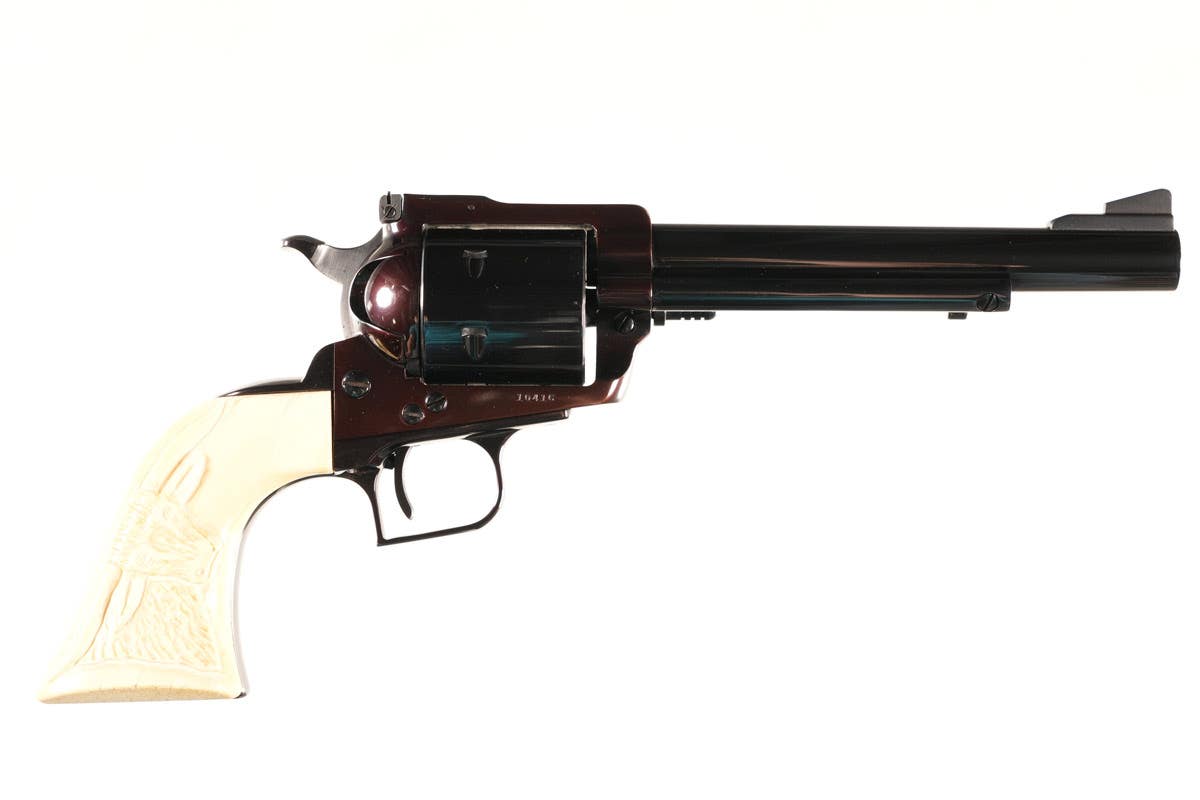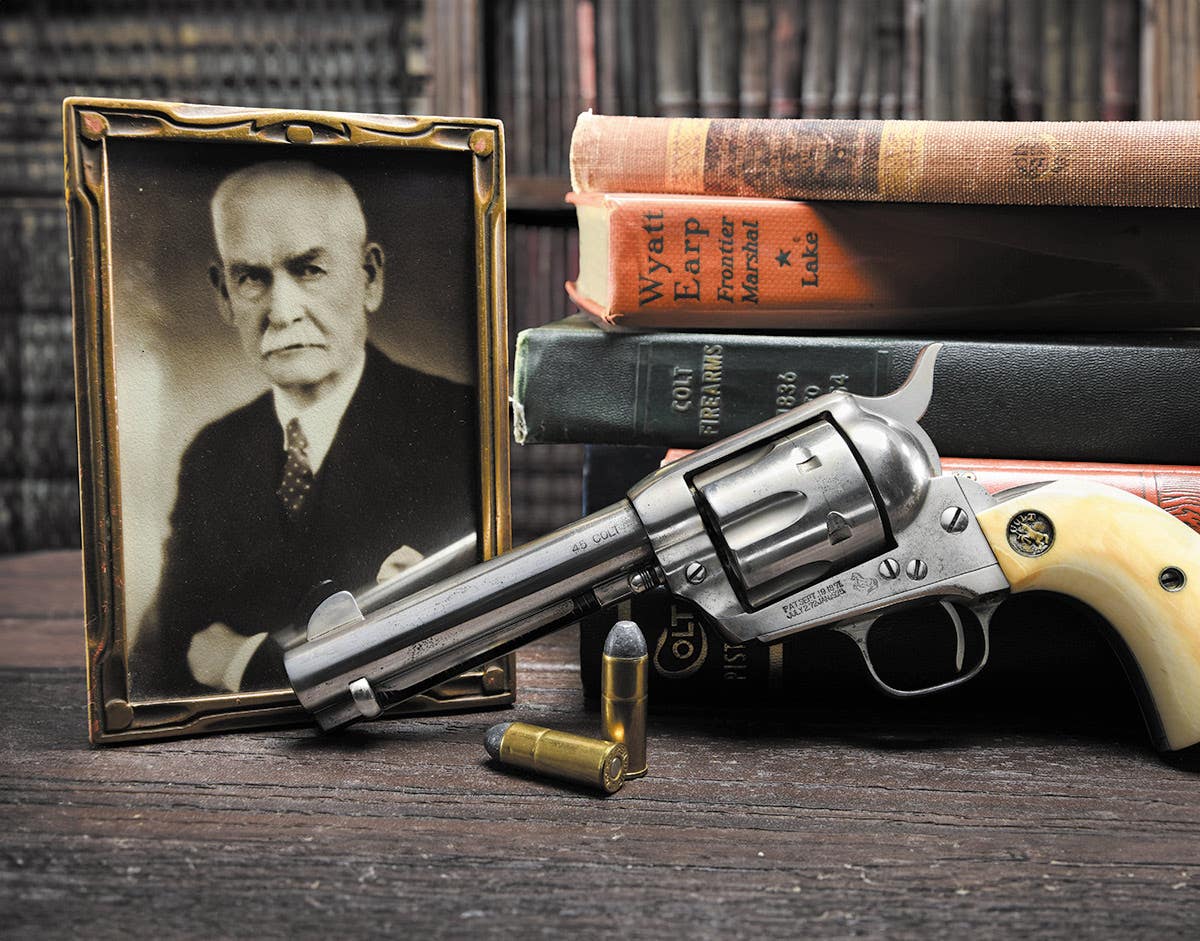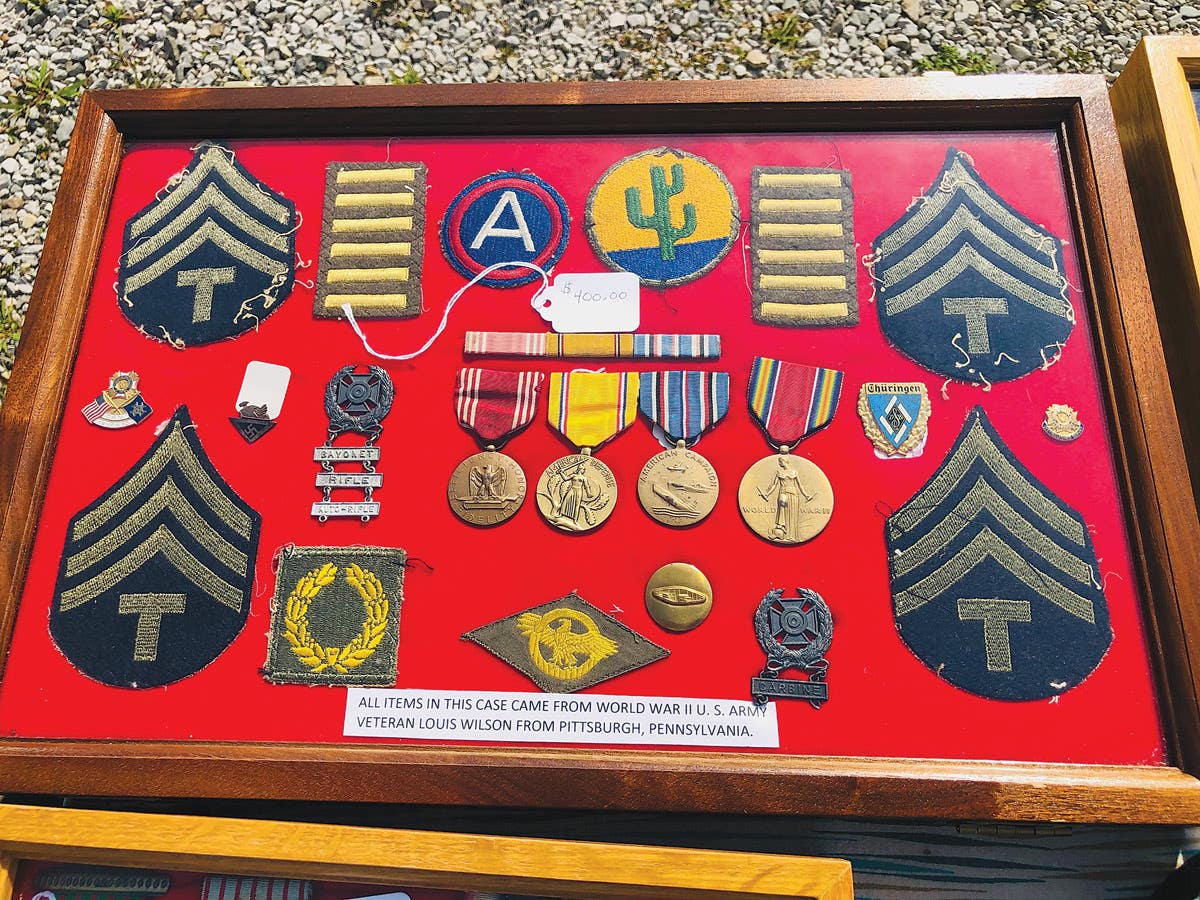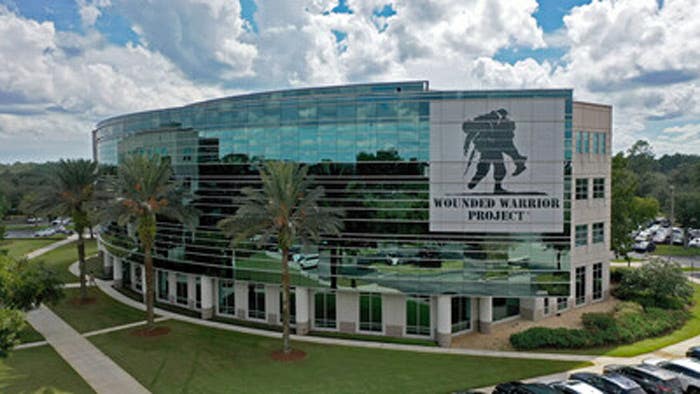‘Million Dollar Luger’ expected to live up to its name
One-of-a-kind pistol estimated to bring $500,000-$1M
IRVINE, Calif. – Greg Martin Auctions’ spring sale, to be held on March 14, will include what descriptors refer to as the “Million Dollar Luger”. The ultra-rare Georg Luger Model 1907 U.S. Test Trials .45 ACP Semi-Automatic Pistol, Serial Number 2 – today literally one-of-a-kind – is estimated to bring $500,000-$1,000,000.
The event, offering over 890 Fine Collectible Arms & Militaria, will be held in Anaheim, Calif., near Disneyland, at the Doubletree Guest Suites Hotel, 2085 S. Harbor Blvd.
The auction will be held in two parts, starting at noon each day.
According to Greg Martin, principal of the firm bearing his name, the March auction, with the Million Dollar Luger as its pinnacle, is sure to be a show-stopper. “This unique Luger is the most famous handgun of its type in existence in all the world – and this is the first time in its history that the pistol has come to auction,” said Mr. Martin. “It will be intriguing to see what sales price it ultimately brings at auction, given the cross-currents in today’s marketplace. On one hand, the economy worldwide continues to stumble; on the other hand, collectible firearms go from strength to strength.”
The firearm known as the “Million Dollar Luger” is considered the most desirable semi-automatic pistol ever produced. It has been showcased frequently by the media: it was featured on the History Channel’s “Tales of the Gun” series, both in segments on “Million Dollar Guns” and “Lugers.” The pistol was also featured in the 1987 movie, “Wall Street,” which garnered an Oscar for its star, Michael Douglas, as “Best Actor in a Leading Role” during the 1988 Academy Awards.
In one scene of the movie, Gekko showed the Million Dollar Luger to Sir Lawrence Wildman (played by Terence Stamp), saying “The rarest gun in the world, Larry, the .45 Luger.” The gun used in the scene, however, was not the original, but a stand-in.
Through the years, the Million Dollar Luger has appeared frequently in print media as well, including most Luger reference books and various magazines.
The Luger cachet began with the son of a surgeon in the mid-1800s. Born in Austria, Georg Luger (1849-1923) was an accountant and manager before becoming a firearms designer. His ability as a marksman in his teens led to his becoming an instructor in the Austro-Hungarian Military Firearms School, where he became interested in automatic loading systems. After working for Ludwig Loewe & Company in Berlin, Germany, and becoming a consultant designer there, he was sent in 1894 to demonstrate to the U.S. Army a Hugo Borchardt-designed firearm, manufactured by Deutsche Waffen-und Waffen-und Munitionsfabriken (DWM), formerly Loewe. Although the army rejected the pistol because it was large, bulky and poorly balanced, Luger learned from the criticism and used it to develop the “Pistole Parabellum” in 1898 (which eventually came to be popularly called the Luger). DWM took the firearm's name from the company’s motto – and the Latin adage – “Si vis pacem para bellum” (If you wish for peace, prepare for war).
In 1900, the Deutsche Waffen-und Munitionsfabriken began producing the Parabellum pistol (known popularly after its designer, Georg Luger).
Originally designed for 7.65×22 mm Parabellum cartridges, the Luger submitted by DWM for the U.S. Army trials – planned for 1906, but delayed until 1907 – was adapted to .45 ACP rounds. This change first reflected test results, then new requirements for military handguns issued by the U.S. Army that included that the caliber not be less than .45. The .45 ACP (Automatic Colt Pistol) cartridge had been designed in 1904 by American firearms designer John Browning and has since become one of the world’s most successful cartridges.
Two .45 ACP Lugers submitted for the U.S. Army trials were personally carried to the U.S. by Georg Luger for the test trials. However, only the Luger marked Serial Number 2 is known to have survived. Serial Number 1 is assumed to have been discarded or destroyed, possibly damaged during or shortly after the trials. Although Luger’s .45 ACP Parabellum Pistol was one of the finalists, DWM withdrew from the U.S. Army trials after the first round of tests.
After Mr. Luger brought the firearm to America, it most likely remained in Massachusetts’ Springfield Armory until it was purchased in 1913 by Dr. C.I. McClenathan of Akron, Ohio, and then sold to Warren Ogdan in 1944 for $150. In 1949, Mr. Ogdan sold the Luger to Sidney Aberman for the same price – $150 – because he was his good friend and was said to be dying to have it.
Following his death, the Luger remained in Aberman collection until it was acquired by a California dealer, who then sold it to Indonesian billionaire Yani Haryanto. In 1989, Mr. Hayanto paid $1,000,000 for the Luger – and the firearm has carried the moniker of the “Million Dollar Luger” ever since. Mr. Haryanto later encountered tumultuous times due to the combination of personal financial difficulties and the collapse of the Indonesian rupiah. The Luger was then sold and has remained in other private collections ever since.
In just 76 years – from 1913 to 1989 – the celebrated Luger went from a market value of $150 to $1 million. The big question now is “What will the Luger sell for in 2010?”
The Historic Bowie Knife
Another extraordinary sale highlight will make knife collectors swoon: the rare, important and historic Bowie Knife made by Daniel Searles and Reese Fitzpatrick of Louisiana, circa 1830s.
The exceedingly rare, important and historic Bowie Knife was made by Daniel Searles and Reese Fitzpatrick, Baton Rouge, La., circa 1830s. It features an 8-inch blade with a Spanish Notch and half moon bolsters on either side, 12 3/4 inches overall; checkered ebony grip with oval panels set with tiny silver studs and mounted with gold oval escutcheon, rouletted ferrule and pommel cap engraved “Houston Staring,” the butt with engraved monogram. The knife is contained in original black leather sheath, mounted with coin silver fittings engraved in crisp, serifed letters “Searles & Fitzpatrick.” The silver throat has a round belt stud and silver carrying rings. The ferrule and pommel are of gold.
Rezin P. Bowie presented several bowies to his friends that reflected the original knife he had made for his famous brother, James “Jim” Bowie. It was Rezin who presented the Searles Baton Rouge knife to Henry Waller Fowler of the 2nd U.S. Dragoons, which is now on display at the Alamo in San Antonio, Texas, and which is identical to this knife.
Reese Fitzpatrick worked in Baton Rouge in the 1830s prior to moving to Natchez, Mississippi. Fitzpatrick is considered one of the South’s greatest weapons artisans and was an expert craftsman in silver and gold. The Natchez Free Trader reported on May 17, 1861, that Reese Fitzpatrick, gunsmith of Natchez, made the finest bowie knife when he was a resident of Louisiana. The Searles-Fitzpatrick signed bowie knife is the only known example in existence. Fergus Gardere is engraved around the pommel. Mr. Gardere was born in New Orleans in 1817 and was one of the most prominent citizens of East Baton Rouge Parish. In the early years of his career, he was a conspicuous figure in the political history of Louisiana. This knife was obtained from one of Fergus Gardere’s descendants. (Lot 1102. Estimate: $75,000-$125,000)
Also going up for bid is Part II of the Dale & Dolores Buller Collection, with some of the highest-quality firearms offered in recent years, including exceptional Winchesters and Colts.
A diverse selection of fine rifles, revolvers, Randall knives and edged weapons and shotguns will be presented. Also included in the sale are military arms (other Lugers, and rare collectibles from the Third Reich era such as cased orders and badges).
All items in the March auction are illustrated in the catalog, available by mail from Greg Martin Auctions or at the sale. The complete catalog – including full descriptions, estimates and photographs by individual lot – is available online at www.gregmartinauctions.com.
Greg Martin Auctions bidders can participate in the events in various ways: onsite at the Doubletree Hotel in Anaheim, via phone bidding and absentee bids. In addition, real-time, Internet bidding through Proxibid allows potential buyers online to view a photo of each item as it goes up for sale and to place a bid as selling is underway. Auction Previews are being held through March 13 at Greg Martin Auctions’ headquarters, located at 2152 Alton Parkway, Suite K, Irvine, Calif.
Greg Martin Auctions’ next live sale is scheduled for June 2010 in Anaheim, Calif.







